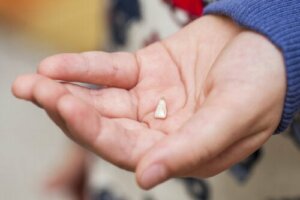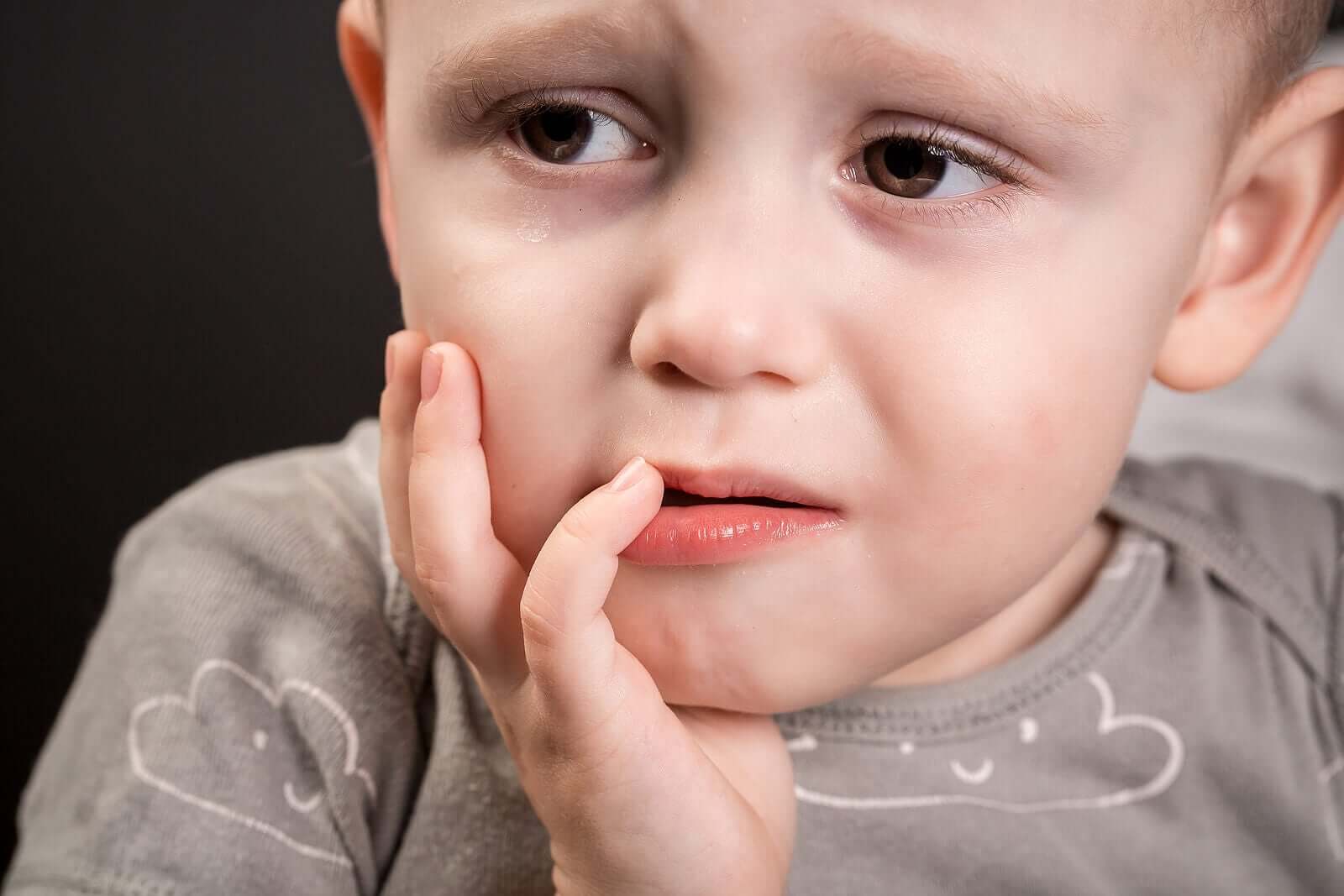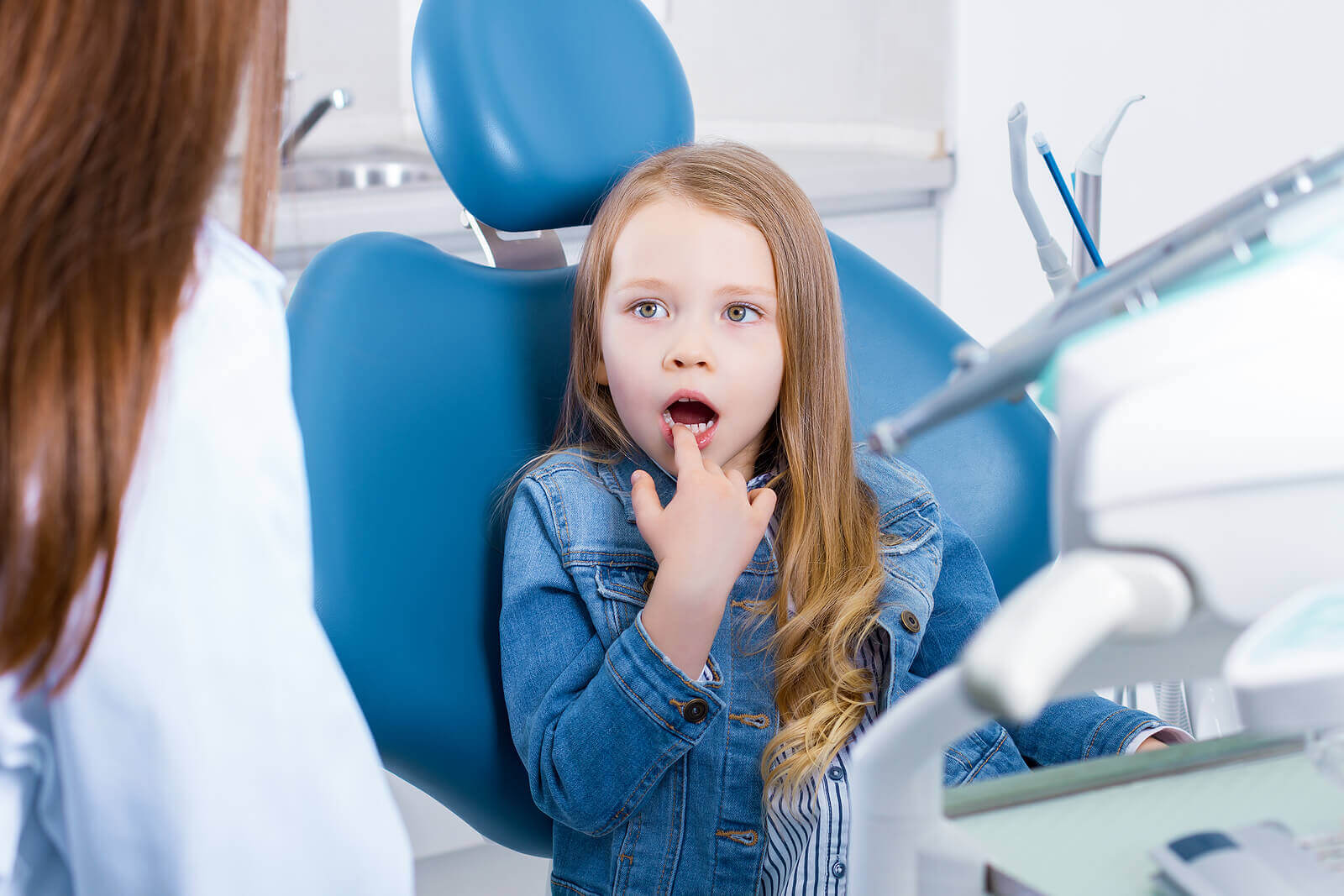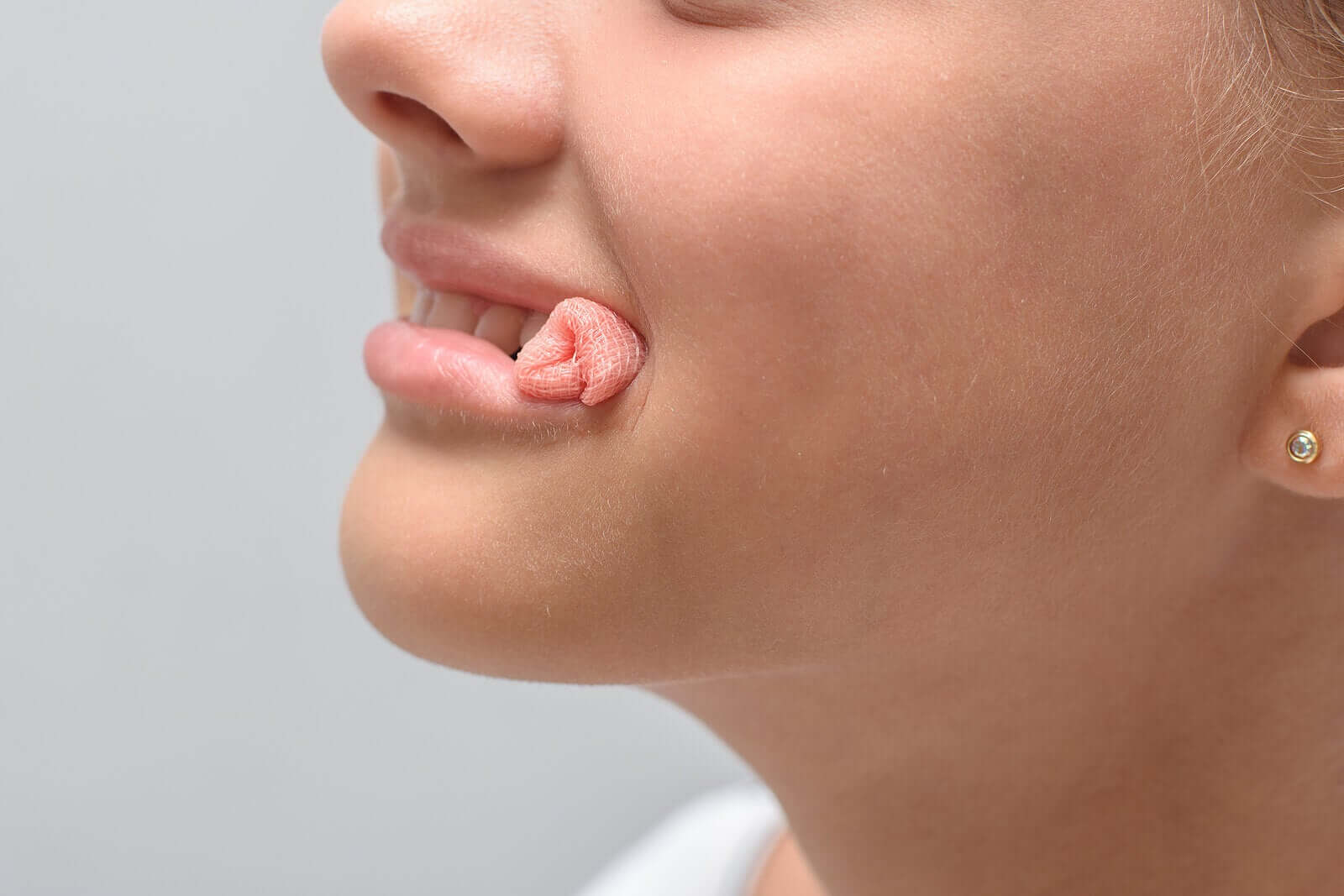Dental Avulsion in Children: What It Is and How to Act

The joy that children experience in their games and sports can sometimes be overshadowed by blows and trauma to the mouth. In these cases, it’s possible for dental avulsion in children to occur, a situation in which a dental piece is ejected from its place.
This situation produces tension, pain and stress. As a parent, you should know what to do to calm and help your child at that moment. Keep reading to find out how.
What is a dental avulsion in children?
Dental avulsion in children is the complete removal of a dental element from the socket where it was inserted. The tooth is expelled from the mouth in its entirety (crown and root) without its structure being compromised.
The detachment of a tooth from its natural place occurs as a result of trauma or blow. It’s a dental emergency and thus, acting quickly in order to solve the situation is crucial.
Dental avulsion in children can occur in both the temporary and permanent teeth. The upper incisors are the most frequently affected elements because they’re more exposed when it comes to blows to the mouth.

What should you do in the case of dental avulsion in children?
When suffering this type of trauma, the child experiences pain, bleeding, and a great deal of stress. The adult in charge is responsible for staying calm in order to act quickly and appropriately. The steps to follow will be different depending on whether it’s a baby tooth or a permanent tooth.
Avulsion of a temporary tooth
In cases where the expelled tooth is a baby tooth, you shouldn’t reimplant it in the socket. Doing so could damage the future permanent tooth that’s forming inside the bone.
What you should do is head urgently to the dentist. The professional will carefully examine the entire injured area and take x-rays to observe if there are bone fractures and make sure that no tooth fragments are left in other areas.
Avulsion of a permanent tooth
In cases where the tooth expelled from the mouth is permanent and the child doesn’t present serious complications that require urgent hospitalization (loss of consciousness, bleeding, vomiting, confusion), the adult should contact a dentist for help and advice at that time. The steps to follow are below:
- Search for the tooth: Try to find the expelled tooth as quickly as possible. Take it by the crown and never by the root, which should be kept intact.
- Clean the tooth: If the tooth is very dirty, it should be washed with clean water for ten seconds, grasping it from the crown.
- The root area shouldn’t be touched, rubbed or dried.
- Reposition the tooth: You should try to place the tooth in the correct position in the hole it left in the mouth before the clot forms. Ask the child to bite down on gauze or a tissue to hold the tooth in place. Then, visit your dentist immediately.
- Transferring the tooth: If the tooth can’t be repositioned in its socket, you need to keep it moist. It should be transported in a glass of milk or saline solution, or inside the child’s mouth, under the tongue, being careful not to swallow it. Don’t place it in a handkerchief or napkin so that it doesn’t dehydrate.
- Consult your dentist right away: Take the child to the dentist as soon as possible, preferably within the first hour after the trauma. The sooner the situation is resolved, the better the prognosis.
Treatment
When the child arrives at the clinic, the dentist will be in charge of managing the situation and the child’s care will be the priority. The accompanying adults should control their anxiety, allow the professional to act, and convey peace of mind to the child.
The dentist will perform a clinical and radiographic examination. If the affected tooth is permanent, it’ll be placed back in the socket (or its position will be checked if the patient already had it reimplanted).

Then, another control x-ray will be taken with the tooth already in place. The child will be made to bite carefully to test the bite and make sure that there are no interferences in the occlusion.
In order to hold the reimplanted tooth in place, the dentist will make a splint to immobilize it. This consists of joining it with orthodontic wire and composite (esthetic material used in fillings) to the neighboring teeth to prevent any type of movement. The splint will be left in place for at least three months.
Antibiotics and anti-inflammatory drugs will be necessary to avoid infections, discomfort, and to promote recovery. A tetanus vaccine will also be necessary.
In cases of the avulsion of a temporary tooth, it’s also necessary to visit the dentist quickly. The dentist will check the affected hard and soft tissues.
Depending on the child’s age and the time remaining before the tooth replacement, the placement of a prosthetic appliance may be necessary. This has the function of maintaining the space for the permanent tooth and restoring the lost esthetics and functionality.
Recommendations after dental reimplantation
After the dentist has reimplanted the tooth in its socket and has immobilized it, certain special care will be required:
- Soft diet: Avoid foods that require a lot of chewing. Light, cold foods, such as milkshakes, yogurts and ice cream, will help with better recovery.
- Resting the area: Don’t bite on the reimplanted tooth.
- Maintain good oral hygiene: Don’t suspend oral hygiene. Brushing in the area should be done carefully and with a soft brush.
- The dentist may prescribe an antiseptic rinse.
- Periodic dental controls: Periodic visits will be scheduled to control the evolution and to check the state of the splint. After the immobilization is removed, check-ups should be made at 1 month, 3 months, 6 months, and 1 year. The reimplanted tooth element may need to receive a root canal treatment at some point.
- Tending to complications: The dentist will describe warning signs to pay special attention to, such as the appearance of fistulas, pus discharge, intense pain, or swelling of the face.

How to prevent dental avulsion in children?
When it comes to preventing dental avulsion in children, it’s important to avoid situations that favor blows and falls. So, kids should avoid jumping from moving swings and running on the edges of swimming pools.
Given that upper teeth that are extruded outwards are at greater risk of suffering injuries, treating these malpositions with orthodontics is also a form of prevention. For young children, it’s best not to use walkers.
Mouthguards – a transparent device that’s placed in the mouth – are recommended for high-risk sports, bicycling and rollerblading. They’re a great ally for avoiding dental avulsion, since it helps to cushion the blows on the jaw and to protect the dental elements.
Acting quickly is the key
When faced with dental avulsion in children, knowing what to do and acting quickly, calmly and efficiently will make all the difference. Remember that the sooner the dentist is consulted, the better the prognosis for the lost tooth.
Blows in the mouth can be prevented, but sometimes they’re unavoidable. If your little one loses a tooth due to trauma, now you know what you need to do.
The joy that children experience in their games and sports can sometimes be overshadowed by blows and trauma to the mouth. In these cases, it’s possible for dental avulsion in children to occur, a situation in which a dental piece is ejected from its place.
This situation produces tension, pain and stress. As a parent, you should know what to do to calm and help your child at that moment. Keep reading to find out how.
What is a dental avulsion in children?
Dental avulsion in children is the complete removal of a dental element from the socket where it was inserted. The tooth is expelled from the mouth in its entirety (crown and root) without its structure being compromised.
The detachment of a tooth from its natural place occurs as a result of trauma or blow. It’s a dental emergency and thus, acting quickly in order to solve the situation is crucial.
Dental avulsion in children can occur in both the temporary and permanent teeth. The upper incisors are the most frequently affected elements because they’re more exposed when it comes to blows to the mouth.

What should you do in the case of dental avulsion in children?
When suffering this type of trauma, the child experiences pain, bleeding, and a great deal of stress. The adult in charge is responsible for staying calm in order to act quickly and appropriately. The steps to follow will be different depending on whether it’s a baby tooth or a permanent tooth.
Avulsion of a temporary tooth
In cases where the expelled tooth is a baby tooth, you shouldn’t reimplant it in the socket. Doing so could damage the future permanent tooth that’s forming inside the bone.
What you should do is head urgently to the dentist. The professional will carefully examine the entire injured area and take x-rays to observe if there are bone fractures and make sure that no tooth fragments are left in other areas.
Avulsion of a permanent tooth
In cases where the tooth expelled from the mouth is permanent and the child doesn’t present serious complications that require urgent hospitalization (loss of consciousness, bleeding, vomiting, confusion), the adult should contact a dentist for help and advice at that time. The steps to follow are below:
- Search for the tooth: Try to find the expelled tooth as quickly as possible. Take it by the crown and never by the root, which should be kept intact.
- Clean the tooth: If the tooth is very dirty, it should be washed with clean water for ten seconds, grasping it from the crown.
- The root area shouldn’t be touched, rubbed or dried.
- Reposition the tooth: You should try to place the tooth in the correct position in the hole it left in the mouth before the clot forms. Ask the child to bite down on gauze or a tissue to hold the tooth in place. Then, visit your dentist immediately.
- Transferring the tooth: If the tooth can’t be repositioned in its socket, you need to keep it moist. It should be transported in a glass of milk or saline solution, or inside the child’s mouth, under the tongue, being careful not to swallow it. Don’t place it in a handkerchief or napkin so that it doesn’t dehydrate.
- Consult your dentist right away: Take the child to the dentist as soon as possible, preferably within the first hour after the trauma. The sooner the situation is resolved, the better the prognosis.
Treatment
When the child arrives at the clinic, the dentist will be in charge of managing the situation and the child’s care will be the priority. The accompanying adults should control their anxiety, allow the professional to act, and convey peace of mind to the child.
The dentist will perform a clinical and radiographic examination. If the affected tooth is permanent, it’ll be placed back in the socket (or its position will be checked if the patient already had it reimplanted).

Then, another control x-ray will be taken with the tooth already in place. The child will be made to bite carefully to test the bite and make sure that there are no interferences in the occlusion.
In order to hold the reimplanted tooth in place, the dentist will make a splint to immobilize it. This consists of joining it with orthodontic wire and composite (esthetic material used in fillings) to the neighboring teeth to prevent any type of movement. The splint will be left in place for at least three months.
Antibiotics and anti-inflammatory drugs will be necessary to avoid infections, discomfort, and to promote recovery. A tetanus vaccine will also be necessary.
In cases of the avulsion of a temporary tooth, it’s also necessary to visit the dentist quickly. The dentist will check the affected hard and soft tissues.
Depending on the child’s age and the time remaining before the tooth replacement, the placement of a prosthetic appliance may be necessary. This has the function of maintaining the space for the permanent tooth and restoring the lost esthetics and functionality.
Recommendations after dental reimplantation
After the dentist has reimplanted the tooth in its socket and has immobilized it, certain special care will be required:
- Soft diet: Avoid foods that require a lot of chewing. Light, cold foods, such as milkshakes, yogurts and ice cream, will help with better recovery.
- Resting the area: Don’t bite on the reimplanted tooth.
- Maintain good oral hygiene: Don’t suspend oral hygiene. Brushing in the area should be done carefully and with a soft brush.
- The dentist may prescribe an antiseptic rinse.
- Periodic dental controls: Periodic visits will be scheduled to control the evolution and to check the state of the splint. After the immobilization is removed, check-ups should be made at 1 month, 3 months, 6 months, and 1 year. The reimplanted tooth element may need to receive a root canal treatment at some point.
- Tending to complications: The dentist will describe warning signs to pay special attention to, such as the appearance of fistulas, pus discharge, intense pain, or swelling of the face.

How to prevent dental avulsion in children?
When it comes to preventing dental avulsion in children, it’s important to avoid situations that favor blows and falls. So, kids should avoid jumping from moving swings and running on the edges of swimming pools.
Given that upper teeth that are extruded outwards are at greater risk of suffering injuries, treating these malpositions with orthodontics is also a form of prevention. For young children, it’s best not to use walkers.
Mouthguards – a transparent device that’s placed in the mouth – are recommended for high-risk sports, bicycling and rollerblading. They’re a great ally for avoiding dental avulsion, since it helps to cushion the blows on the jaw and to protect the dental elements.
Acting quickly is the key
When faced with dental avulsion in children, knowing what to do and acting quickly, calmly and efficiently will make all the difference. Remember that the sooner the dentist is consulted, the better the prognosis for the lost tooth.
Blows in the mouth can be prevented, but sometimes they’re unavoidable. If your little one loses a tooth due to trauma, now you know what you need to do.
All cited sources were thoroughly reviewed by our team to ensure their quality, reliability, currency, and validity. The bibliography of this article was considered reliable and of academic or scientific accuracy.
- Fernández, Pedro P. Mejía, and Keyla De la Hoz Fonseca. “Medios de almacenamiento para dientes avulsionados. Una revisión.” Salud Uninorte 33.3 (2017): 517-531.
- Martínez Sánchez, Esther de Jesús. “Avulsión dental.” (2017).
- Asencio Sevillano, Arturo. “Nivel de conocimiento sobre el manejo inmediato de la fractura y avulsión dental de los estudiantes de Escuela Profesional de Educación Física de la UNMSM, Lima 2019.” (2019).
- Muñoz Molina, María Gabriela. Tratamiento multidisciplinario post traumatismo dentario (avulsión) realizado en un adolescente de 13 años. Reporte de un caso. BS thesis. QUITO/UIDE/2018, 2018.
- De la Teja-Ángeles, E., et al. “Avulsión dental.” Acta Pediátrica de México 37.2 (2016): 132-133.
- Jiménez Cunjamá, Fernando Antonio, and Emir Alejandro Chambé Coello. Manejo y tratamiento de avulsión dental en dientes jóvenes de la segunda dentición. Diss. Facultad de Ciencias Odontológicas y Salud Pública-Cirujano Dentista-UNICACH, 2019.
- Angulo Cadena, Karen Stefania. “Prevalencia de avulsión dentaria en escolares de 6-11 años distrito 5 de Guayaquil semestre A-2018.” (2018).
This text is provided for informational purposes only and does not replace consultation with a professional. If in doubt, consult your specialist.








